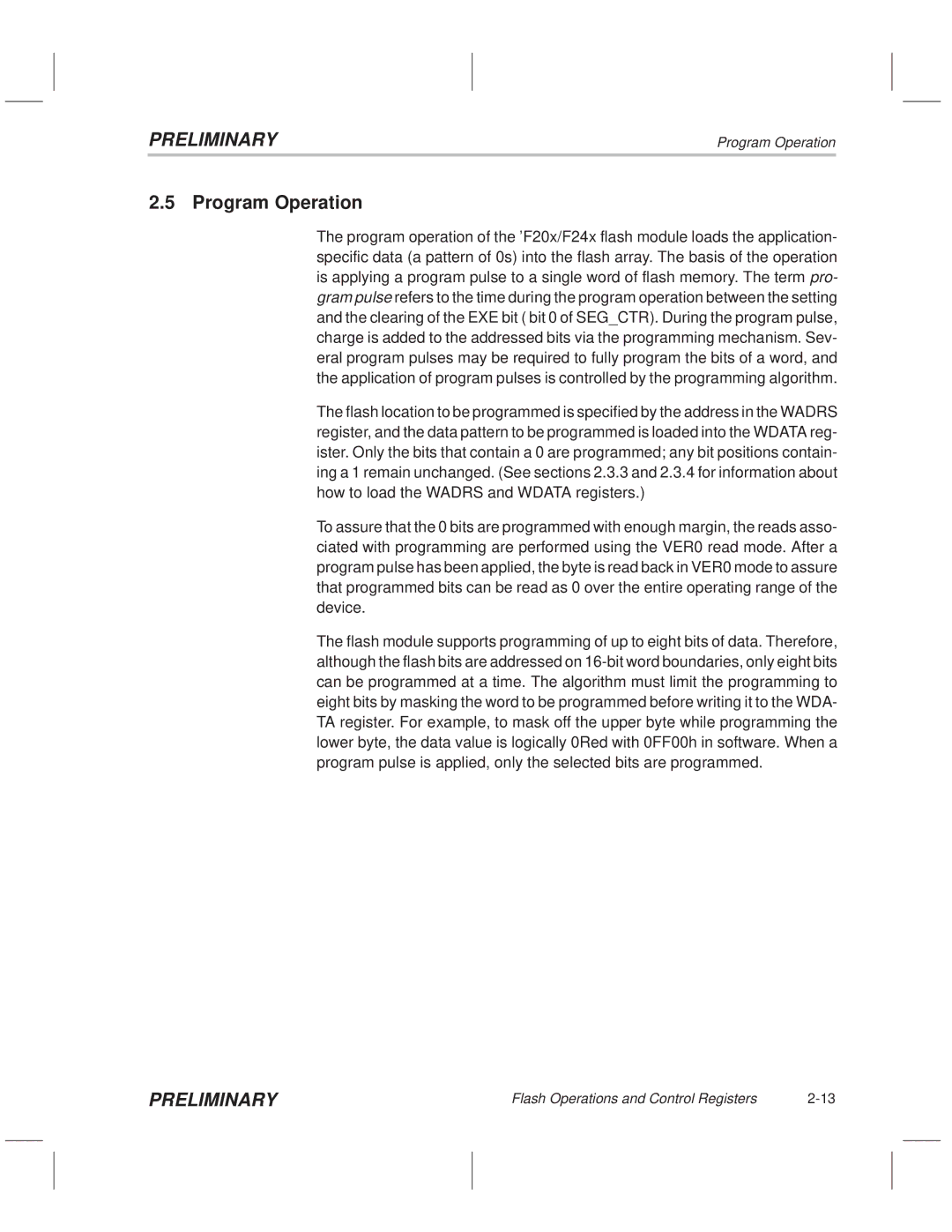
PRELIMINARY
Program Operation
2.5 Program Operation
The program operation of the 'F20x/F24x flash module loads the application- specific data (a pattern of 0s) into the flash array. The basis of the operation is applying a program pulse to a single word of flash memory. The term pro- gram pulse refers to the time during the program operation between the setting and the clearing of the EXE bit ( bit 0 of SEG_CTR). During the program pulse, charge is added to the addressed bits via the programming mechanism. Sev- eral program pulses may be required to fully program the bits of a word, and the application of program pulses is controlled by the programming algorithm.
The flash location to be programmed is specified by the address in the WADRS register, and the data pattern to be programmed is loaded into the WDATA reg- ister. Only the bits that contain a 0 are programmed; any bit positions contain- ing a 1 remain unchanged. (See sections 2.3.3 and 2.3.4 for information about how to load the WADRS and WDATA registers.)
To assure that the 0 bits are programmed with enough margin, the reads asso- ciated with programming are performed using the VER0 read mode. After a program pulse has been applied, the byte is read back in VER0 mode to assure that programmed bits can be read as 0 over the entire operating range of the device.
The flash module supports programming of up to eight bits of data. Therefore, although the flash bits are addressed on
PRELIMINARY
Flash Operations and Control Registers |
